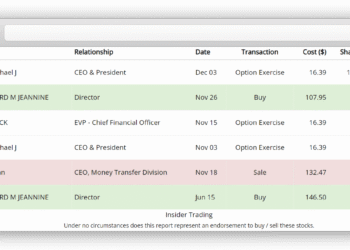The US Stock Market Analysis provides investors with critical insights into current trends and performance indicators impacting major indices. Recent optimism surrounding US trade negotiations has fueled a notable increase in stock prices, with the S&P 500’s impressive performance reaching a 2-1/4 month high and the Dow Jones Industrial Average achieving a 1-1/2 month high. As interest rates fluctuate and bond yields decline, investor sentiment remains buoyed by expectations of federal interventions to stimulate growth and counteract inflationary pressures. This analysis encompasses stock market news that outlines significant shifts and highlights potential risks, allowing investors to navigate market uncertainties effectively. By understanding these dynamics, traders can better position themselves to capitalize on future opportunities while mitigating risks in a volatile economic landscape.
An exploration of the US equity markets offers an in-depth look at the ongoing developments and key factors shaping financial performance. Analyzing major stock indices such as the S&P 500 and Dow Jones Industrial Average reveals critical movements influenced by trade discussions and macroeconomic variables. With interest rates playing a significant role in financial strategy, understanding their impact is paramount for investors. The latest market updates and related stock performance are essential for making informed decisions in this fluctuating environment. By following current stock trends and news, investors can navigate the complexities of the market with confidence.
Stock Market Overview: Gains Fueled by Trade Negotiation Optimism
On Friday, the US stock markets experienced notable gains as optimism regarding US trade negotiations invigorated investor confidence. The S&P 500 Index surged by 0.70%, reaching a 2-1/4 month high, while the Dow Jones Industrial Average also marked a significant rise of 0.78%. This upward momentum in stock prices can be attributed to easing tensions between the US and China, which allowed for a more risk-on approach across various asset classes. The positive sentiment around trade discussions between the US and EU, as reported by the Financial Times, further contributed to the bullish outlook among traders.
Additionally, the June E-mini S&P futures recorded a boost of 0.68%, reflecting broader market trends. Alongside this, the Nasdaq 100 Index saw an increase of 0.43%. The favorable developments in trade negotiations are critical for the market, as they have historically influenced the S&P 500’s performance. Encouraging signs from the negotiations have led buyers back into the market, indicating a potential shift toward a more sustained rally if positive news persists.
Interest Rates Impact and Its Reflection on Stock Performance
The recent movements in the stock market have been significantly influenced by the Federal Reserve’s stance on interest rates. Following remarks from Atlanta Fed President Bostic, who expressed a cautious outlook on the economy, investors began speculating on the likelihood of interest rate cuts. With the markets currently assigning a 9% probability for a -25 basis point rate cut in the upcoming FOMC meeting, this has positioned stocks favorably, alleviating some investor fears about an impending recession. The decline in Treasury yields further cements this sentiment, with lower rates generally boosting stock valuations.
However, the dynamics around interest rates remain complex, particularly with hawkish indicators stemming from inflation data. The University of Michigan’s May inflation expectations jumped to multi-decade highs, hinting at potential challenges ahead for the Fed’s policy decisions. As these expectations shape investors’ outlooks, they will likely weigh heavily on the stock market’s performance in the coming weeks. Market participants are vigilantly monitoring these developments, understanding that changes in interest rate policy can have profound impacts on both stock valuations and overall market sentiment.
Understanding the S&P 500 Performance in Light of Economic Indicators
The S&P 500’s strong performance over the past week serves as a reflection of both investor sentiment and macroeconomic indicators. With over 80% of S&P 500 companies having reported their quarterly earnings, a striking 77% exceeded analyst estimates. This marked a notable return to robust earning growth, with projections suggesting a 13.1% increase in profits for Q1, far surpassing the anticipated 6.6%. These impressive results have added a layer of confidence among investors, reinforcing the notion that the stock market remains resilient despite potential headwinds from rising inflation.
However, this optimism has been tempered by mixed economic indicators. Weaker-than-expected housing data and a drop in consumer sentiment to a three-year low could pose risks to future market performance. As analysts and investors parse through these conflicting indicators, the future performance of the S&P 500 will largely depend on how well companies can continue to meet or exceed expectations amidst a backdrop of economic uncertainty. This situation exemplifies the challenges and opportunities presented to traders as they navigate the complexities of the current market landscape.
Dow Jones Industrial Average: Resilience Amid Economic Uncertainty
The Dow Jones Industrial Average (DJIA) closed up by 0.78% on Friday, reflecting the overall positive mood in the market despite looming economic uncertainties. As the index reached a 1-1/2 month high, it demonstrated significant resilience, buoyed by hopes surrounding US trade negotiations. The composition of the Dow, which includes some of the largest and most established companies in the United States, positions it well to absorb economic shocks, further adding to the index’s strength in volatile times. Companies within the Dow have shown adaptability and growth, contributing to its solid performance.
Yet, while the DJIA has shown positive trends, challenges remain apparent. Economic indicators such as rising inflation and fluctuating consumer sentiment could present obstacles to sustaining this upward trajectory. Investors are closely watching the interplay between these factors, particularly as they assess the likelihood of future interest rate changes by the Federal Reserve. As the market navigates through uncertainties, the Dow’s established reputation and historical performance may continue to attract confidence from investors, reinforcing its status as a key player in the American stock market.
Impact of US Trade Negotiations on Market Sentiment
The ongoing US trade negotiations have proved pivotal in shaping market sentiment, with recent communications indicating progress that has lifted investor spirits. As news broke that the US and EU moved past deadlock on tariff discussions, stocks rallied in response to this newfound optimism. The ability of negotiators to reach compromises impacts not only investor confidence but also the broader economic landscape, as successful agreements could lead to reduced tariffs and enhanced trade relationships. Such developments are critical for sectors sensitive to trade policies, including technology and manufacturing, which are major contributors to the S&P 500 and DJIA.
Despite this optimism, caution remains among investors, especially given the precarious nature of US-China trade relations. Any regression in negotiations could lead to renewed tensions and market volatility. As discussions continue, market participants are acutely aware of the potential repercussions trade policy changes can have on corporate earnings and economic growth. Thus, while current sentiment is positive, the long-term outlook will depend heavily on the outcomes of these negotiations and their alignment with broader economic indicators.
Consumer Sentiment’s Role in the Stock Market Dynamics
Consumer sentiment is a critical barometer of economic health and plays an influential role in stock market dynamics. Recent data from the University of Michigan highlighted a worrying drop in consumer sentiment, falling to a three-year low, which has rattled market participants. Consumer confidence directly impacts spending decisions, which in turn affects corporate earnings across various sectors. A decrease in sentiment may signal that consumers are more cautious about spending, particularly amidst rising inflation fears, ultimately feeding into the overall economic picture and impacting stock performance.
Concurrently, the rising inflation expectations reported also contribute to shaping how consumers view the economy’s trajectory. An increase in the perception of inflation can lead to greater caution in spending, further affecting market dynamics. Investors will need to navigate these consumer sentiment trends carefully, as shifts can have both immediate and long-term implications for market performance. Understanding this interplay between consumer confidence and stock valuations will be crucial as market participants strategize in an environment marked by economic uncertainty.
Sector Performance Analysis: Pharmaceuticals Lead the Charge
On Friday, the pharmaceutical and health insurance sectors showed impressive rebounds, marking a notable performance during a week volatile with mixed economic signals. Companies like UnitedHealth Group and Moderna led the gains, showcasing increases of more than 5%. Such strong performances in these sectors underscore the importance of healthcare stocks, particularly in times of economic uncertainty, as they often demonstrate resilience compared to cyclical industries. Their ability to thrive amidst fluctuating market conditions curates optimism for investors looking for stability in their portfolios.
Moreover, the rally observed in the pharmaceutical sector can be attributed to a couple of factors, including advancements in medical technology and robust earnings reports that exceeded expectations. As analysts predict continued growth in healthcare, driven by demographic trends and increasing healthcare demand, investors are keenly tuned into stocks in this sector. The strong performance of such companies not only supports the overall market but also indicates a significant trend that may redefine how health-focused sectors contribute to stock indices like the S&P 500.
Global Market Trends and Their Influence on US Stocks
As the US stock market navigates its complex landscape, global market trends undoubtedly play a significant role in influencing performance. Recent data indicated mixed performances in international markets, with the Eurozone experiencing slight gains while benchmarks such as China’s Shanghai Composite faced declines. Investors often look beyond US borders to gauge economic health and sentiment throughout the global arena, which can have ripple effects on domestic stock performance. A robust showing in international markets can bolster investor confidence, leading to increased inflows into US equities.
Conversely, declines in key international indexes may prompt caution among US investors, who might reconsider their positions in response to global economic signals. This interconnectedness highlights the importance of monitoring international stock trends, particularly in how they align with US trade negotiations and economic indicators. As fluctuations in global markets unfold, they can influence the risk appetite of investors, impacting sectors differently and ultimately shaping the trajectory of US stock market indices like the S&P 500 and DJI.
Earnings Reports: Key Insights into Market Movement
As earnings season draws to a close, the figures emerging from many S&P 500 companies provide critical insights into the underlying health of the stock market. With approximately 80% of companies reporting, a noteworthy 77% surpassed estimates, reflecting a promising earnings growth narrative driven by strong corporate performance. Such outcomes elevate market sentiment, as exceeding expectations in earnings can often lead to sustained stock price increases and continually positive forecasts for future quarters.
Nonetheless, there remains a delicate balance, as weaker projections from certain sectors could introduce volatility in stock prices. The recent earnings reports underscore the importance of ongoing analysis in understanding broader market trends. Investors are keenly aware that individual performance can significantly influence stock indices, particularly as we transition into new economic conditions influenced by interest rates and trade discussions. Effective evaluation of these earnings will be key to informed trading strategies moving forward, especially as we continue to interpret the evolving market landscape.
Frequently Asked Questions
How do US trade negotiations impact US Stock Market Analysis?
US trade negotiations significantly influence US Stock Market Analysis as they affect investor sentiment and risk appetite. Recent developments, particularly in US-China trade relations, have been linked to notable market movements, with easing tensions often leading to bullish reactions in key indices like the S&P 500 and Dow Jones Industrial Average.
What recent trends in the S&P 500 performance reveal about investor expectations?
The recent trends in S&P 500 performance, which show a rise due to optimism regarding US trade negotiations, indicate that investors are becoming increasingly confident in the market’s stability. This reflects a positive shift in sentiment following reports on tariff discussions between the US and EU, which enhance market prospects.
How does stock market news relate to fluctuations in interest rates?
Stock market news often correlates directly with changes in interest rates, as investors monitor Federal Reserve signals regarding rate cuts or hikes. An environment with lower interest rates can boost the US stock market, particularly growth stocks, by making borrowing cheaper, as was hinted at by recent comments from Atlanta Fed President Bostic.
What role does the Dow Jones Industrial Average play in US Stock Market Analysis?
The Dow Jones Industrial Average serves as a critical benchmark in US Stock Market Analysis, reflecting the performance of 30 significant publicly traded companies. Movements in the Dow, particularly in response to economic data and trade negotiations, help analysts gauge overall market health and economic sentiment.
How do interest rates impact the US stock market?
Interest rates have a profound impact on the US stock market, as changes can influence corporate profitability and consumer spending. When rates are low, borrowing costs decrease, encouraging investment and consumption, which typically leads to higher stock prices, notably observed during periods of anticipated Fed rate cuts.
| Index | Change (%) | Key Influences | Sector Movers | Earnings Highlights |
|---|---|---|---|---|
| S&P 500 ($SPX) | +0.70% | Optimism regarding US trade negotiations, easing US-China tensions. | Pharmaceuticals: UnitedHealth +5%, Moderna +5%; Tech: Applied Materials -5%. | Over 80% of S&P 500 companies reported; 77% exceeded estimates, Q1 earnings +13.1%. |
Summary
The US Stock Market Analysis indicates a bullish sentiment in the markets, primarily driven by positive developments in trade negotiations between the US and EU, signaling potential easing of tariffs. Despite weaker housing data and declining consumer sentiment, the stock indexes, particularly the S&P 500 and Dow, reached multi-month highs due to optimistic investor sentiment and solid earnings reports from several companies. The expectation of interest rate cuts from the Federal Reserve also bolstered market confidence, despite concerns about rising inflation. Overall, while challenges remain, the market’s resilience amid these conditions suggests a cautiously optimistic outlook ahead.













